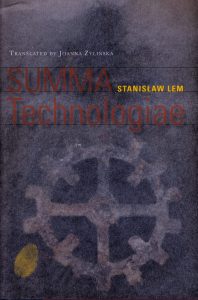Let us imagine that Mr. Smith, a bank clerk, is living with his puritanical aunt—who has a female lodger—in a multistorey house whose front wall is made of glass. As a result, the learned observer on the other side of the street is able to see everything that goes on inside. Let the interior of the house represent the “universe” we are supposed to examine. The number of “systems” that can be distinguished within this universe is practically infinite. We can approach it, for example, on an atomic level. We will then have groups of molecules from which chairs, tables, and the bodies of the three persons are made. The persons move; we want to be able to predict their future states. Since each body consists of around 25 molecules, we would have to outline 3 x 1025 trajectories of those molecules, that is, their spatiotemporal paths. This is not the best approach, as before we manage to establish just the initial molecular states of Mr. Smith, the female lodger, and the aunt, around fifteen billion years will have passed, those people will have fallen into their graves, while we shall not have even managed to provide an analytic representation of their breakfast. The number of variables under consideration depends on what it is that we actually want to examine. When the aunt goes down to the cellar to fetch some vegetables, Mr. Smith kisses the lodger. In theory, we could arrive at who kissed whom just on the basis of the analysis of molecular behavior, but in practice, as we have demonstrated earlier, the Sun is likely to go out first. We would be unnecessarily diligent because it is enough to treat our Universe as a system that consists of three bodies. Conjugations of two bodies periodically occur within it when the third body goes down to the cellar. Ptolemy is the first one to appear in our Universe. He can see that the two bodies conjoin while the third one moves away. He thus develops a purely descriptive theory: he draws some cycles and epicycles, thanks to which one can know in advance which position will be taken by the two upper bodies when the lower one finds itself in the lowest position. Since in the very middle of his circles, there happens to be a kitchen sink, he declares it the center of the Universe, with all the significance this carries. Everything then revolves around the sink.
Continue reading
Monthly Archives: March 2018
nature and technology
even if we ourselves choose the end point, our way of getting there is chosen by Nature
We have to differentiate between possibilities and realistic goals. In science, possibilities have always had their “negative prophets.” The number of such prophets has at times surprised me, as has the passion with which they have been trying to prove the futility of constructing flying, atomic, or thinking machines. The most sensible thing we can do is refrain from arguing with those forecasters of the impossible not because we have to believe in everything coming true one day but rather because, when drawn into heated debates, people can easily lose sight of what the real problems are. “Anti-homunculists” are convinced that in negating the possibility of a synthetic mind, they are defending the superiority of man over his creations creations that, they believe, should never overtake the human genius. This kind of defense would only make sense if someone were really trying to replace man with a machine, not within a particular workplace but rather within civilization as a whole. But nobody intends to do this. The point is not to construct synthetic humanity but rather to open up a new chapter in the Book of Technology: one containing systems of any degree of complexity. As man himself, his body and brain, all belong to such a class of systems, such a new technology will mean a completely new type of control man will gain over himself, that is, over his organism. This will in turn enable the fulfillment of some age-long dreams, such as the desire for immortality, or even perhaps the reversal of processes that are considered irreversible today (biological processes in particular, especially aging). Yet those goals may turn out to be a fantasy, just as the alchemists’ gold was. Even if man is indeed capable of anything, he surely cannot achieve it in just any way. He will eventually achieve every goal if he so desires, but he will understand before that that the price he would have to pay for achieving such a goal would reduce this goal to absurdity.It is because even if we ourselves choose the end point, our way of getting there is chosen by Nature. We can fly, but not by flapping our arms. We can walk on water, but not in the way it is depicted in the Bible. Perhaps we will eventually gain a kind of longevity that will practically amount to immortality, but to do this, we will have to give up on the bodily form that nature gave us. Perhaps, thanks to hibernation, we will be able to travel freely across millions of years, but those who wake up after their glacial dream will find themselves in an unfamiliar world, since the world and the culture that have shaped them will have disappeared during their reversible death. Thus, when fulfilling our dreams, the material world requires us to undertake actions the realization of which can equally resemble a victory and a defeat.
Stanisław Lem “Summa Technologiae”, translated by Joanna Zylinska, University of Minnesota Press, Minneapolis 2013, p. 90-71


